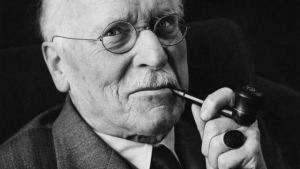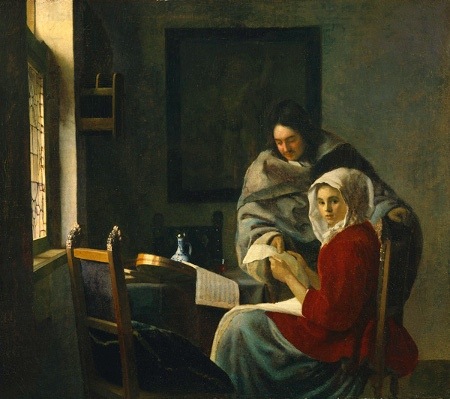The term psychiatry is derived from two Greeks words: psyche, meaning soul or mind, and iatros, meaning physician (“History of Psychiatry”). A psychiatrist is one who assesses both the psyche, the psychological and mental inclinations of patients, and who acts as a doctor, exercising the authority to prescribe medication.
Mental illnesses have existed for as long as humans have existed. During the latter part of fifth century BC, Ancient Greeks saw a connection between emotions and physiology. Hippocrates argued that there are both physiological and emotional aspects to diseases (Fink 31). However, up until the eighth century when psychiatric hospitals were first set up in the medieval Islamic world, it was commonly understood that mental diseases had supernatural origins. Common treatments involved exorcism, magic, and sorcery (“History of Psychiatry”). Most people believe that modern psychiatry began c. seventeenth and eighteenth centuries when French insane asylums were built (Szasz 1247).
Johann Christian Reil, born in 1759, coined the term “psychiatry.” He had a deep interest in the natural sciences and studied medicine at the University of Göttingen in Eastern Friesland. He moved to Halle and completed a thesis on yellow humor in the blood. He became a professor of therapeutics. In 1795 he started a book in which he described his belief that the “vital force” can be explained in physical terms. He commenced to observe fevered patients in delirium, which sparked his interest even more in the underlying psychiatric causes of illnesses. He then wrote what is considered the first psychiatric journal with his colleague Kayssler. The term psychiatry was first used in this journal. Reil’s findings were impressive, as he noticed a difference in personality integration between normal and abnormal patients. He proposed that symptoms like delusions, dreams, and fantasies should be addressed and treated through both the body and the mind. He favored research of Greek, Roman, and Arab psychiatric cures. For him, the best way to cure insanity was to eliminate obsessions. He also argued against insane asylums feeling like prisons and argued in favor of mental hospitals that allowed their patients sufficient time for exercise and fresh air (Armytage).
Up until the nineteenth century, insane asylums were essentially prisons for both madmen and the socially undesirable. The old, the chronically ill, prostitutes, and abandoned children could all be found in an asylum. Even if they did not commit any crimes, they would be sent into these prison-like establishments for being “insane,” “psychotic,” or “mentally ill.” The hospitals were like prisons, the patients like inmates, and the doctors like wardens (Szasz 1247).
In 1841 the Association of Medical Officers of Asylums and Hospitals for the Insane was established in England as group of medical superintendents of public or private asylums. This foundation was important in advocating for moral and humane treatment of the clinically insane. By 1926 it received a Royal Charter of Incorporation, and it eventually took on the name Royal College of Psychiatrists (“Royal College Of Psychiatrists”).
The first American Association of Medical Superintends met in Philadelphia in 1844. This association secured a good reputation for American insane asylums (Curwen 5).
At the start of the twentieth century, Sigmund Freud’s psychoanalytical theories marked the dawn of modern psychiatry. He essentially founded diagnostic and therapeutic medicine, and investigated psychoneuroses. His comprehensive theory of mental function proved that psychoanalysis could be applied to a range of different psychological abnormalities and peculiarities (“Sigmund Freud”).
In 1917, the first Statistical Manual for the Use of Institutions for the Insane was written. A Standard Classified Nomenclature of Disease was released in 1942. In 1943, the Armed Forces created a nomenclature for mental illnesses called the “Medical 203.” In 1952 the American Psychiatric Association wrote the first Diagnostic and Statistical Manual for mental disorders, adapted from the Medical 203. It categorized 106 mental disorders. The DSM-II, released in 1968, described 182 disorders. The DSM-III was published in 1980 and described 265 disorders. The third DSM represented the medicalization of psychiatry and received heavy influence from science and data. The DSM-IV was released in 1994, and the DSM-IV-TR in 2000. They documented 297 disorders (Ferranti).
As of 2013, the DSM-5 is used to diagnose mental disorders. According to the Anxiety and Depression Association of America, the major refinements to the DSM-5 deal with diagnosing Anxiety and Depression. It focuses on examining symptoms across a lifetime, including older adults and children. Anxiety disorders are separated into three sequential broad chapters: Anxiety Disorders, Obsessive-Compulsive and Related Disorders, and Trauma- and Stress-Related Disorders. The DSM-5 is designed to provide understandable language for mental health professionals, patients, and caregivers (“DSM-5: Changes to the Diagnostic and Statistical Manual of Mental Disorders | Anxiety and Depression Association of America, ADAA”).

